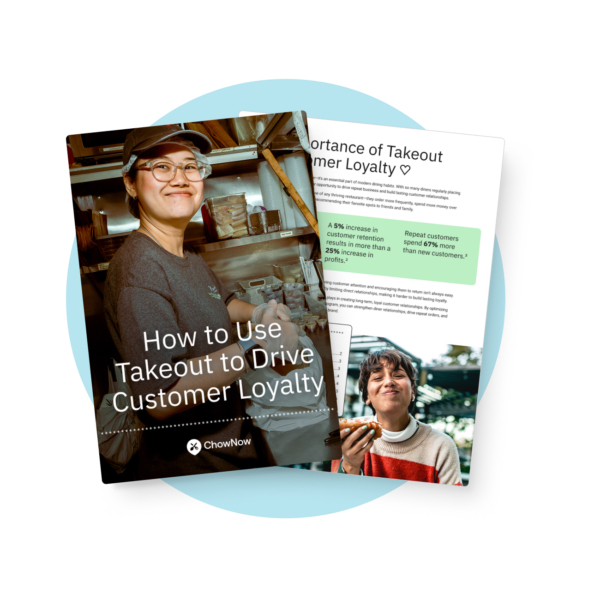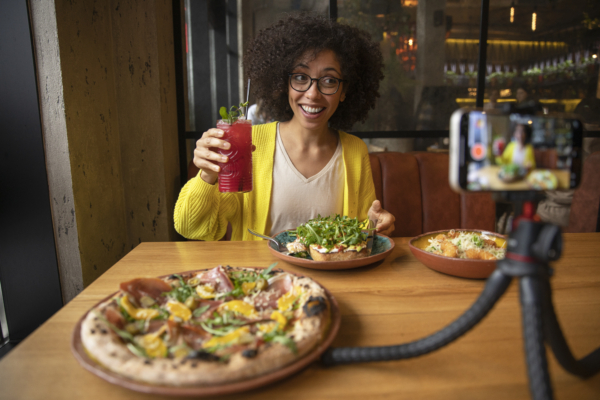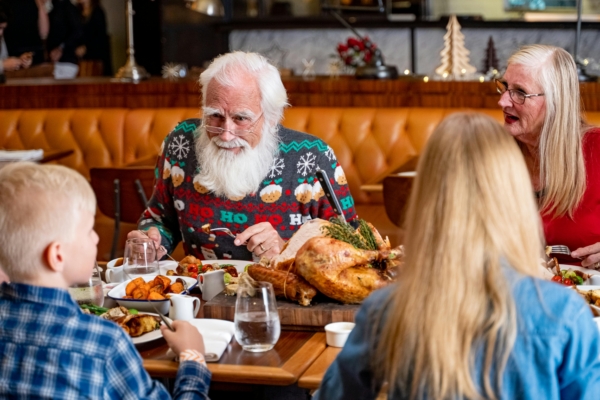The Best Loyalty Programs for Independent Restaurants: How to Choose the Right One

Many restaurant operators would love to integrate a customer loyalty program but worry it’s too expensive, complicated, or won’t deliver results.
That hesitation is understandable, but the customer demand is undeniable. In fact, research shows that 47% of diners participate in at least one loyalty program, meaning there is a large, built-in audience actively looking for reasons to stay loyal.
When done correctly, however, the right program can boost customer lifetime value and encourage repeat business without adding stress.

A strong loyalty strategy isn’t just about discounts. It’s about building brand loyalty, increasing customer lifetime value, and strengthening your brand relationship.
With so many options available, choosing from the best customer loyalty programs can feel overwhelming. Loyalty programs provide a competitive advantage by differentiating a restaurant in a crowded market.
In this article, you will learn:
- Why a loyalty program is essential for your restaurant’s success.
- The different types of restaurant loyalty programs and how they work.
- What to look for when selecting the best program for your business.
Let’s explore how the right customer loyalty program can help your restaurant thrive.
Why Restaurant Loyalty Programs Drive Customer Loyalty & Boost Customer Lifetime Value

Running a restaurant means participating in a constant struggle for customer attention.
In a saturated market, a great meal alone isn’t always enough to guarantee repeat purchases. A well-designed successful loyalty program can be that deciding factor.
Defining the Restaurant Loyalty Rewards Program
A restaurant loyalty program is a marketing strategy designed to encourage repeat business, reward customers, and boost customer retention and lifetime value.
Customer loyalty programs are used to attract and retain customers. They incentivize customer engagement and spending through points, discounts, and tiered benefits.
The Power of Habit and Gamification
A good program doesn’t just reward customers, it creates a habit. This works through a process called gamification, where earning rewards feels like a game, encouraging higher customer engagement.
When guests know they earn loyalty points and can easily earn rewards through their purchases, they have a tangible reason to choose your restaurant every time.
This strategy is proven to be effective. In fact, 57% of restaurants have a reward or loyalty program, and studies show that members of loyalty programs have a tendency to spend 20% more than non-member customers.

Making Customers Feel Valued
Beyond prompting more frequent visits, a good restaurant loyalty program makes customers feel valued.
People like to be recognized, and a simple reward for their continued support can turn a casual diner into a regular, leading to higher customer value. Rewarding customers for their continued support is essential to building loyalty.
Emotional loyalty drivers contribute significantly to customer engagement with brands. Consider the global reach of MyMcDonald’s Rewards; the program makes its massive customer base feel valued by turning every single purchase into points for free favorites. It is a simple and powerful incentive that drives loyalty and keeps people coming back through their app.
Turning Customers into Advocates
Better yet, loyal customers become advocates, recommending your spot through referral programs. They don’t just spend more; they become an extension of your marketing team, bringing in new customers through trusted, word-of-mouth referrals.
The Importance of Data Collection
Digital loyalty programs allow restaurants to collect invaluable data on customer preferences and spending habits. This information allows for targeted marketing, menu optimization, and a deeper understanding of what your customers truly want, turning your program into a powerful research tool.
The Psychology Behind Why Loyalty Programs Work

Effective loyalty programs aren’t just good marketing; they tap into fundamental principles of human psychology. Understanding these triggers can help you design a more compelling and effective program for your restaurant.
The Principle of Reciprocity
When your restaurant provides a reward or an unexpected perk, it creates a feeling of indebtedness in the customer. They feel a subconscious need to “give back,” which often translates into a return visit, a larger order, or a positive online review.
The Goal-Gradient Effect
This psychological principle states that people are more motivated to complete a task as they get closer to the goal. It’s why the ninth stamp on a ten-stamp coffee card feels so powerful.
A well-designed program visually shows members their progress, making the next reward feel tantalizingly close and encouraging that one extra visit to achieve it.

Loss Aversion
Once a customer has earned points, they perceive those points as something they own. The fear of “losing” them (if they expire) or “wasting” them (by not redeeming them) can be a powerful motivator to make another purchase. This is more compelling than a simple discount, which doesn’t feel like a tangible asset to the customer.
Habit Formation Loops
The most successful programs create a powerful habit loop: Cue, Routine, Reward.
- Cue: The feeling of hunger or the desire to dine out.
- Routine: The customer chooses your restaurant.
- Reward: They earn points, feel recognized, and enjoy a satisfying meal.
Over time, this positive reinforcement strengthens the loop, making your restaurant the automatic, habitual choice.
6 Types of Restaurant Loyalty Programs

Not all loyalty programs work the same way, and choosing the right one depends on what fits best with your restaurant’s business model and customer habits. Here are the most common types of restaurant loyalty programs and how they work.
1. Digital sticker-based programs
Think of this as a modern take on your classic punch card. Customers earn a digital sticker every time they order from your restaurant. Once they collect a set number, they unlock a reward—typically a percentage or dollar amount discount.
The beauty of this system is its simplicity. No physical cards to lose, no complicated points to track or calculate to see how close or how far from a reward you are—just a seamless experience that keeps customers coming back.
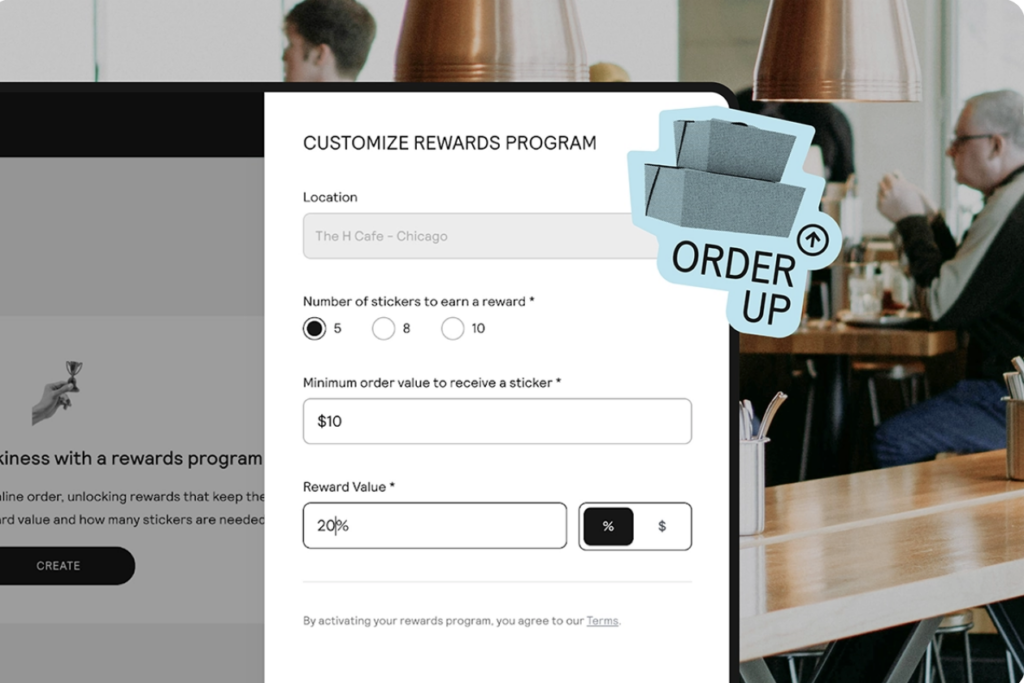
This is ChowNow’s digital sticker-based Rewards Program and you can see how simple and effective it is at helping customers track their progress towards earning a reward.
Operators can customize the threshold by setting the minimum order value required to earn a sticker, choosing how many stickers are needed for a reward, and deciding whether diners receive a percentage or dollar amount off their next order.
It integrates with your direct online ordering system, running in the background to ensure customers earn rewards automatically—without adding extra work for your staff.
2. Points-based programs
Points-based loyalty programs allow customers to earn points for every dollar spent. Those points can then be redeemed for rewards, such as free menu items, discounts, or exclusive perks. This structure incentivizes higher spending since customers know they’re working toward a reward with every order.
For example, Domino’s Rewards gives customers 10 points for placing orders of $5 or more, then customers can choose menu items based on how many points they’ve earned. Like, a 20oz drink for 20 points or a free medium 2-topping for 60 points.
This type of program works well if you want to encourage higher spending since customers are motivated to reach the next reward tier. It also gives you flexibility in how rewards are structured, allowing you to offer special promotions or bonus points during slower periods. Points-based programs can be confusing if rewards feel out of reach, so ensure you provide clear communication to avoid frustration.
3. Tiered loyalty programs
Tiered programs reward your most loyal customers with better perks the more they spend. For example, a customer might start in a “Basic” tier, earning small rewards, but once they spend a certain amount, they move into a “Gold” or “VIP” tier with even better benefits.
Chick-fil-A successfully uses a tiered system by offering customers 10 points for every $1 they spend starting out as a “Chick-fil-A One” member. From there, they work up through three more tiers of membership status before arriving at the top “Signature” member level.
This approach adds an element of exclusivity and encourages guests to keep coming back to unlock better deals. It’s particularly effective for restaurants that want to build long-term customer relationships while creating a sense of status and achievement. One downside of tiered loyalty programs is they can discourage casual customers if the tiers seem unattainable.

4. Subscription-based programs
Instead of rewarding customers for each visit, a subscription-based loyalty program offers perks in exchange for a monthly or yearly membership fee. This could mean free delivery, exclusive menu items, or member-only discounts.
P.F. Chang’s uses a subscription-based program where customers can, for $6.99 a month, sign up for discounts and perks. Members receive Chang’s Ca$h™ Rewards after making any qualifying purchases that can be used on future purchases.
If your restaurant has a strong customer base that orders frequently, this model can be a great way to build steady loyalty. Customers will want to get the most out of their monthly or yearly membership fee, encouraging them to order more frequently. With subscription-based programs some customers may hesitate to pay upfront. Make sure you provide continuous value to keep members engaged.
5. Cash-back rewards
Cash-back programs give customers a percentage of their spending back as store credit or discounts. For example, a customer might earn $5 for every $50 spent, which they can apply toward their next meal.
Papa John’s Papa Rewards operates similarly, where customers earn 1 point per $1 spent, and every 15 points convert into $2 in Papa Dough, which can be used like cash on future orders. This structure ensures that spending adds up over time, encouraging repeat visits to redeem earned rewards.
Unlike traditional discounts that apply to a single transaction, cash-back rewards accumulate, giving customers an incentive to return and use their earned credit. On the other hand, cash-back rewards sometimes don’t feel as rewarding as free items or exclusive perks and this setup can be costly if not carefully managed.
6. Visit-based program
Visit-based programs reward customers for the number of times they dine at or order from a restaurant, rather than how much they spend. This structure encourages consistent, repeat visits and is often used by coffee shops, sandwich shops, and casual dining spots.
Jimmy John’s Sandwiches uses a visits-based loyalty program called Freaky Fast Rewards. Customers earn a free sandwich after their first purchase and continue to earn rewards based on their visit frequency rather than the amount spent.
Over time, members receive surprise rewards like free sides, drinks, or sandwiches, keeping them engaged and encouraging repeat visits. This approach makes the program simple and appealing, especially for customers who order frequently, although it doesn’t directly drive higher spending per visit.
What to Look for in a Restaurant Loyalty Program

An effective loyalty program does more than just offer discounts—it should always be a revenue generating tool that has your restaurant’s best interests at heart.
The right system makes it easy to reward repeat customers while also driving more direct orders, increasing check sizes, and strengthening your customer relationships.
But choosing the wrong one can lead to wasted time, lower profit margins, and a frustrating experience for both you and your guests.
With so many options available, how do you know which one is the best fit for your restaurant?
Before committing, here are several key factors to consider:
1. Low or no commission fees.
A loyalty program should increase your revenue—not take a chunk of it. Some platforms charge high fees or take a percentage of every order, cutting into already-tight margins.
If a program forces you to give up a portion of each sale in exchange for customer engagement, it’s not really benefiting your business.
The best programs allow you to keep more of what you earn while still offering valuable rewards to your customers.
Why it matters:
- Keeps costs low so rewards don’t feel like an added expense
- Ensures that loyalty-driven customers remain profitable
- Helps you invest more in marketing
2. Easy for customers to use.
A loyalty program only works if people actually use it. If customers have to go through a complicated sign-up process or manually track points, they’ll likely lose interest.
The most effective programs are frictionless—automatically enrolling customers and tracking their rewards in a way that requires little to no effort on their part.
Think about what’s easiest for your guests. A simple, automated system that credits rewards every time they order keeps them engaged without making them jump through hoops.
What to look for:
- A straightforward sign-up process (ideally integrated into your existing online ordering system)
- No extra steps for customers to track their rewards
- A system that your staff can easily explain and manage
3. Seamlessly integrates with online ordering.
A large portion of restaurant sales now happen online. If your loyalty program doesn’t integrate with your direct online ordering system, you’re missing a major opportunity to engage repeat customers.

The best programs automatically track rewards on every direct online order—whether it’s placed through your website or branded app—so customers don’t have to do anything extra. This creates a smoother experience and ensures that your most loyal guests get rewarded no matter how they choose to order.
Why it matters:
- Eliminates human error in tracking points or rewards
- Speeds up the ordering process, making it more convenient for customers
- Ensures every direct order contributes to loyalty rewards
4. Encourages direct online ordering (not third-party apps).
Many loyalty programs offered by third-party delivery platforms are designed to keep customers within their ecosystem—not yours. These platforms may offer perks, but they also take a significant commission on every order, limiting how much of your revenue you actually keep.
A loyalty program that incentivizes customers to order directly from your restaurant—whether through your website or app—helps you retain more profit and build a stronger relationship with your guests.
Instead of relying on third-party marketplaces, you can create your own community of repeat customers who prefer to engage with your brand directly.

Why this is important:
- Direct orders are more profitable than third-party delivery app orders
- You maintain full control over your customer experience and rewards
- Customers build a habit of ordering from you rather than a third-party marketplace
5. Gives you access to customer data.
One of the biggest advantages of a restaurant-run loyalty program is the ability to track customer data and ordering habits. Many third-party platforms keep this data for themselves, making it harder for you to understand your customers and market effectively.
Customer data is powerful because it allows you to personalize offers, send targeted email campaigns, and re-engage customers who haven’t ordered in a while.
If your loyalty program doesn’t give you access to these insights, you’re missing out on a huge opportunity to fine-tune your marketing and increase customer retention.
How to Choose the Right Loyalty Program for Your Restaurant

Trying to decide which loyalty program is the best fit for your restaurant can feel a bit tricky, but if you work through each of these four factors, you’ll have a clear path to the right choice.
Here are the most important factors to consider when making your decision:
1. What is your budget?
Avoid loyalty programs that will cost you more money than they are worth. Be aware of high fees and/or commissions on every order. Your loyalty program should help your restaurant’s profits grow, not become an added expense that cuts into your margins.
Others may have monthly subscription fees that can be hard to justify if customer engagement is low.
What to look for:
- Programs with low or no commissions on orders
- Transparent pricing with no hidden fees
- A system that offers a clear return on investment
Ideally, you want a loyalty system that allows you to set your own rewards and doesn’t require you to give up a percentage of every order. The best programs let you reward customers on your own terms—without paying a third party for the privilege.

2. Is it easy to use?
A loyalty program should be simple for both customers and staff. If it requires customers to jump through hoops—like remembering to scan a code or manually track points—it’s going to be harder to get people to use it.
For staff, the program should work seamlessly in the background. Your team shouldn’t have to manually track rewards or explain a complicated system to every guest. The easier it is to use, the more likely it is to succeed.
A great loyalty program should:
- Automatically track rewards for customers when they order
- Require little to no extra work for your staff
- Make redeeming rewards easy and instant
The smoother the experience, the more engaged your customers will be.
3. Is it compatible with your online ordering system?
A loyalty program should fit seamlessly into your existing tech stack. If it doesn’t work with your online ordering platform, it can cause confusion, delays, and extra work for your team.
What to look for:
- Compatibility with online ordering so customers can earn and redeem rewards for direct ordering
- Automatic syncing to ensure customer purchases and rewards are always up to date
If your team has to manually enter customer rewards data, you’re opening the door to errors, inconsistencies, and extra labor that could slow down service.

4. Does it have marketing support?
A loyalty program is only effective if customers actually use it. The best programs don’t just track points and rewards—they also provide marketing tools to keep customers engaged. This could include automated emails, push notifications, or personalized offers based on customer behavior.
Look for systems that offer:
- Automated email reminders: Let customers know when they’re close to earning a reward or when special promotions are available
- Analytics and reporting: See which customers are most engaged, what rewards are most effective, and where you can optimize
Your loyalty program shouldn’t just exist—it should be actively working to bring customers back and increase their spending.
How to Launch and Promote Your Loyalty Program
Even the best loyalty programs don’t work if customers don’t know about it. A strong launch strategy means customers are aware and ready to sign up so they can begin taking advantage of their new rewards right away.
Here’s how to successfully launch and promote your program:
1. Announce it everywhere.
View this post on Instagram
Make sure customers hear about your loyalty program across multiple channels. Whether they visit your website, social media pages, or your physical location, they should see clear messaging about how to join and the benefits of signing up.
Where to promote:
- Website: Add a banner promoting your loyalty program.
- Social Media: Share posts explaining how it works and why customers should join.
- In-Store Signage: Display posters, table tents, or window decals to catch customers’ attention.
- Receipts & Packaging: Include a note or QR code on printed receipts and takeout bags to encourage sign-ups.
Every customer touchpoint should have a way to tell customers your restaurant has a rewards program.
It can even be as simple as the word “Rewards” in your website’s navigation bar to take them to an information page.
47% of diners participate in at least one loyalty program, which means customers are looking for easy ways to earn and redeem rewards. If they don’t see a clear path to join, they may never take advantage of it.
2. Make sure your staff is up to speed.

Your employees play a major role in getting customers to join. If they don’t fully understand the program or forget to mention it in face-to-face interactions, sign up rates could drop.
Holding brief pre-shift meetings to go over the loyalty program’s functions and benefits—both for customers and the restaurant—can help your staff explain it to diners with confidence.
A simple, enthusiastic reminder like “Did you know about our rewards program?” can make a big difference in sign-ups and engagement. For more information on training staff, read our article on How to Train Staff On New Systems.
3. Use email to keep customers engaged.
Customers need reminders to stay engaged with your loyalty program. Use email marketing to let them know when they’re close to earning a reward, highlight new promotions, or simply remind them to take advantage of their perks.
A well-timed email can bring customers back when they might have otherwise forgotten.
Effective email strategies:
- Welcome email: Thank customers for signing up and explain how to earn rewards
- Reward reminders: Let customers know when they’re close to unlocking a reward
- Special promotions: Offer exclusive deals to keep engagement high
Automating your email process makes it easier to keep customers engaged, ensuring they receive timely updates and incentives without adding extra work for your team.
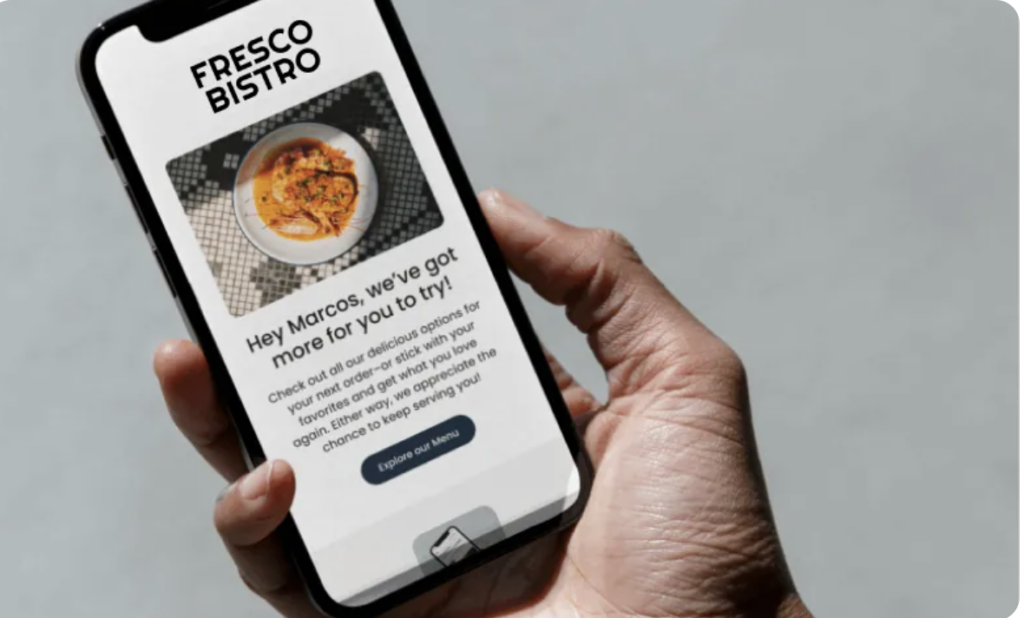
FAQs About Loyalty Programs
Do loyalty programs really work for independent restaurants?
Yes! A well-structured program keeps customers engaged, increases repeat visits, and encourages higher spending, a proven way to drive sustainable growth.
What’s the best type of loyalty program?
It depends on your goals. Some of the most successful loyalty programs, like Starbucks Rewards or the Beauty Insider program, use a tiered model. A value based loyalty program that aligns with your customers’ values can also be incredibly effective. For example, value-based loyalty programs donate a percentage of sales to charity, appealing to customers’ shared values.
How can I make sure my program doesn’t hurt my profit margins?
Choose a commission-free platform and structure rewards intelligently. A discount on a future purchase is often more profitable than a free item, as it guarantees a return visit.
How do I choose the right rewards?
The most effective rewards are what diners want. While discounts are popular, don’t underestimate the power of exclusive rewards and experiential rewards.
How can I measure if my program is working?
Track key metrics like repeat order rates, customer retention, and average order value. A good platform will provide a dashboard with these analytics.
A Simple Way to Drive Repeat Business and the Best Customer Loyalty
The best customer loyalty programs are designed to do more than reward every dollar spent; they are powerful tools to engage customers and build the best customer loyalty. A great program encourages customers to become repeat customers by offering value beyond discounts.
When you let members gain access to exclusive events, provide early access to specials, or create unique experiential rewards, you foster genuine connection. Exclusivity through VIP events and early access to new menus enhances customer appreciation.
Contact ChowNow to learn how a rewards program can keep guests engaged, increase direct orders, and create a more sustainable path to growth—without adding extra stress to your operations.
